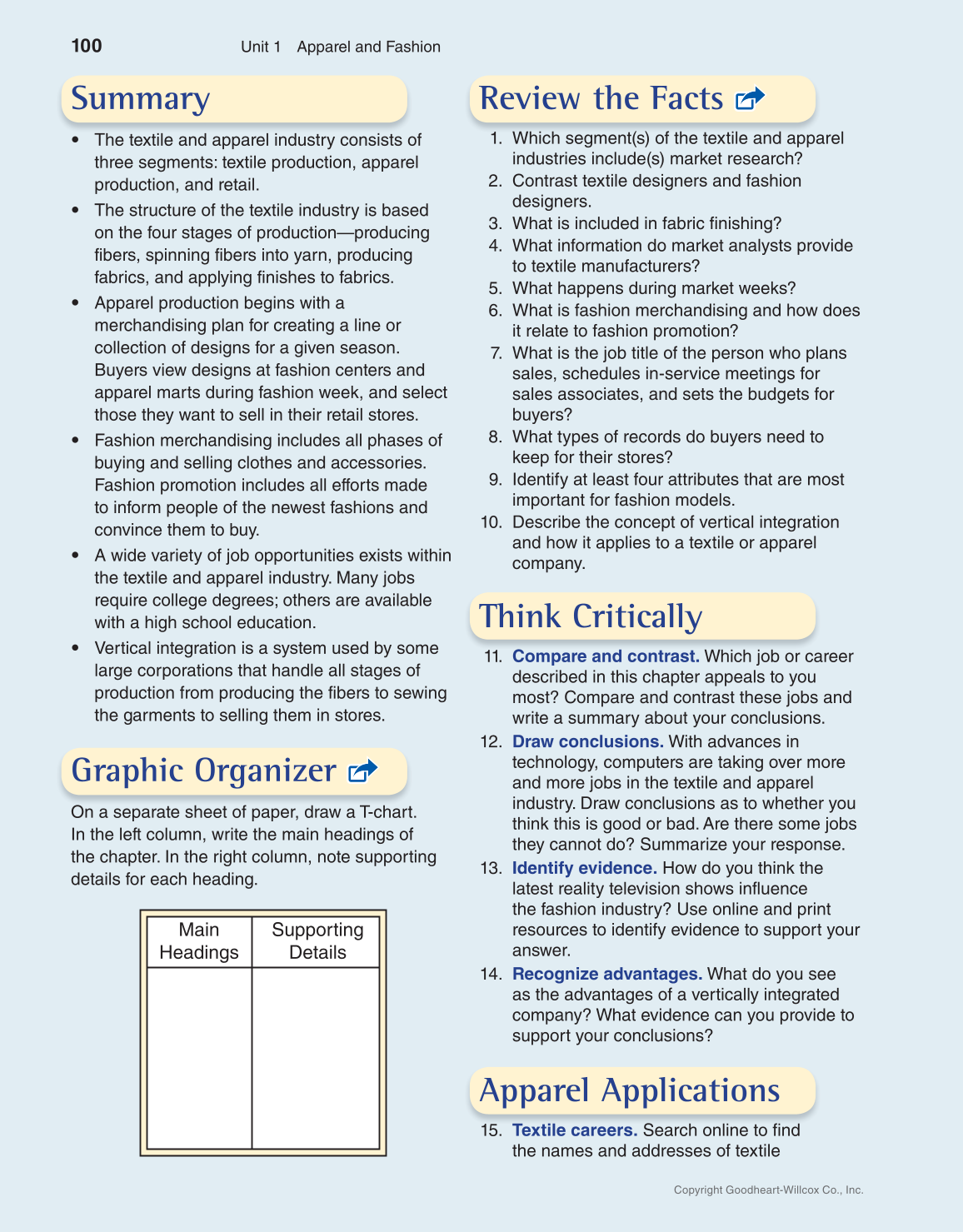100
Unit 1 Apparel and Fashion
Copyright Goodheart-Willcox Co., Inc.
Summary
• The textile and apparel industry consists of
three segments: textile production, apparel
production, and retail.
• The structure of the textile industry is based
on the four stages of production—producing
fibers, spinning fibers into yarn, producing
fabrics, and applying finishes to fabrics.
• Apparel production begins with a
merchandising plan for creating a line or
collection of designs for a given season.
Buyers view designs at fashion centers and
apparel marts during fashion week, and select
those they want to sell in their retail stores.
• Fashion merchandising includes all phases of
buying and selling clothes and accessories.
Fashion promotion includes all efforts made
to inform people of the newest fashions and
convince them to buy.
• A wide variety of job opportunities exists within
the textile and apparel industry. Many jobs
require college degrees; others are available
with a high school education.
• Vertical integration is a system used by some
large corporations that handle all stages of
production from producing the fibers to sewing
the garments to selling them in stores.
Graphic Organizer
On a separate sheet of paper, draw a T-chart.
In the left column, write the main headings of
the chapter. In the right column, note supporting
details for each heading.
Review the Facts
1. Which segment(s) of the textile and apparel
industries include(s) market research?
2. Contrast textile designers and fashion
designers.
3. What is included in fabric finishing?
4. What information do market analysts provide
to textile manufacturers?
5. What happens during market weeks?
6. What is fashion merchandising and how does
it relate to fashion promotion?
7. What is the job title of the person who plans
sales, schedules in-service meetings for
sales associates, and sets the budgets for
buyers?
8. What types of records do buyers need to
keep for their stores?
9. Identify at least four attributes that are most
important for fashion models.
10. Describe the concept of vertical integration
and how it applies to a textile or apparel
company.
Think Critically
11. Compare and contrast. Which job or career
described in this chapter appeals to you
most? Compare and contrast these jobs and
write a summary about your conclusions.
12. Draw conclusions. With advances in
technology, computers are taking over more
and more jobs in the textile and apparel
industry. Draw conclusions as to whether you
think this is good or bad. Are there some jobs
they cannot do? Summarize your response.
13. Identify evidence. How do you think the
latest reality television shows influence
the fashion industry? Use online and print
resources to identify evidence to support your
answer.
14. Recognize advantages. What do you see
as the advantages of a vertically integrated
company? What evidence can you provide to
support your conclusions?
Apparel Applications
15. Textile careers. Search online to find
the names and addresses of textile
Main
Headings
Supporting
Details
